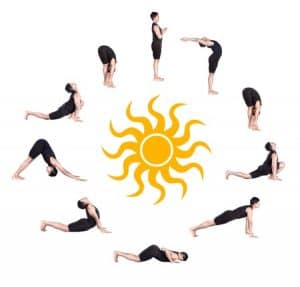Yoga and meditation play an important role in balancing Vata Kapha doshas. Yoga helps to stabilize Vata while also stimulating and energizing Kapha. Vata and kapha doshas have different qualities. Vata is light, dry, and erratic, while Kapha is heavy, cold, and slow. The key to balancing these doshas is to find a combination of calming, grounding yoga and meditation practices for Vata and on the other hand invigorating and stimulating movements for Kapha. Read more to learn about Yoga for Vata Kapha doshas.

Yoga for Vata Kapha Dosha Imbalance
Vata kapha dosha imbalance can lead to several medical issues such as:
Yoga for vata kapha imbalance focuses on working on strengthening the body parts, muscles, and functioning of the organs that directly get impacted due to the imbalance.
- For Vata, try to keep movements slow, steady, and repetitive. Use poses that are restorative and grounding to calm the nervous system.
- For Kapha, incorporate more dynamic sequences, such as standing poses, backbends, and hip openers, to increase circulation and energy.
- For Vata, Keep the practice moderately paced, focusing on slow, mindful movements to prevent overstimulation.
- For Kapha, Encourage a more vigorous pace with stronger, energizing sequences to uplift the spirit and stimulate the body.
Pranayama (Breathing Techniques)
- Ujjayi Breath (Victorious Breath): This breath helps calm the mind. It grounds vata’s erratic energy and at the same time warms up and stimulates the body for Kapha.
- Nadi Shodhana (Alternate Nostril Breathing): It balances the body and mind, calms down the restless energy from vata imbalance as well as lifts kapha’s lethargy.
Yoga for Vata Kapha Dosha Imbalance
Vata requires us to focus on grounding poses that connect you to the earth and bring stability, warmth, and balance. At the same time, Kapha requires us to focus on invigorating poses that stimulate and energize, helping to combat sluggishness.
-
Cat-Cow Pose (Marjaryasana-Bitilasana)
A great way to open the spine and stimulate energy while grounding the body.


-
Sun Salutations (Surya Namaskar)

These flow-based sequences can be slightly modified to include slower movements for Vata, with a focus on deep breaths. They help invigorate Kapha without overwhelming Vata

Mountain pose helps improve posture, stability, and focus, which are essential for balancing Vata.
Warrior I / Virabhadrasana I

A strong pose to build energy, strength, and focus.
Warrior II /Virabhadrasana II

A grounding pose to help build strength and stamina.
Setu Bandhasana (Bridge Pose)

Opens the chest and hips, creating a sense of stability while energizing the body
Chair Pose (Utkatasana)

Stimulates the heart, helps invigorate energy, and boosts circulation.
Downward-Facing Dog (Adho Mukha Svanasana)

This pose stimulates the body, boosts circulation, and opens the chest.

Tree pose balances and stabilizes Vata while providing grounding and focus, and it challenges the body to stay present, which is helpful for both doshas.
-
Half Moon Pose (Ardha Chandrasana)

Builds strength and balance, keeping the mind engaged and focused.

End with a long Savasana to deeply relax, especially important for Vata to ground and calm down while allowing Kapha to release tension and restore energy.
Meditation for Vata Kapha Dosha Imbalance
- For Vata: Meditation with visualization or chanting can help calm the anxious mind, grounding your energy. A short, seated meditation focusing on deep breathing can be very beneficial.
- For Kapha: A more active form of meditation, such as walking meditation, can help invigorate the body and mind.
End Note
This combined approach allows for the balancing of both Vata and Kapha doshas. The goal is to find harmony through grounding yet stimulating movements, warm breath, and conscious awareness. A practice that includes stability, strength, and movement can help regulate the qualities of both doshas, leading to a more balanced and harmonious state.




